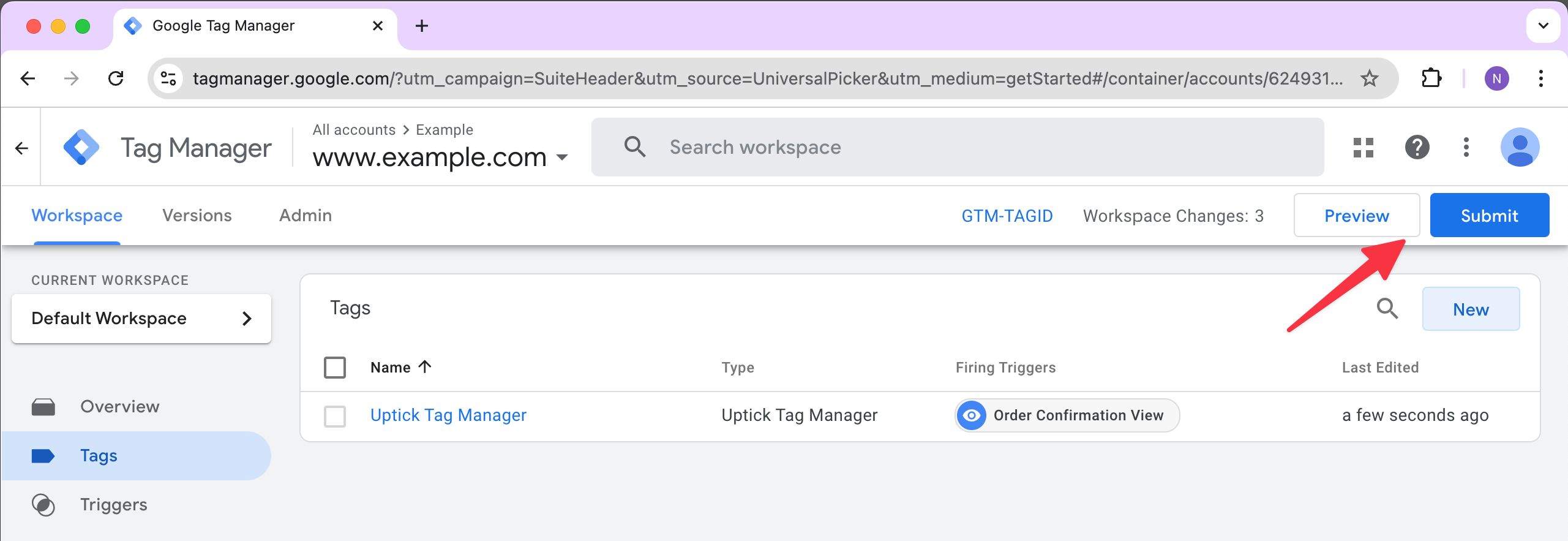Google Tag Manager Integration
Installing the Uptick Tag Manager Template
Enhance your website effortlessly by integrating our Uptick implementation with Google Tag Manager. The setup is quick and easy, with the steps outlined below. By following them, you’ll seamlessly upgrade your website using Google Tag Manager tags through our custom integration.
Importing the Template into Google Tag Manager
Before you begin, make sure to download the required template, which you’ll need in step 5.
- Download this: zip file.
- Unzip and open the file.
- Within the zip file, an “Uptick Tag Manager.tpl” file will be ready to use.
Step 1 - Go to Templates
In Google Tag Manager, click on “Templates” on the left sidebar.

Step 2 - Add a New Template
On the top right, click “New” under the Tag Templates section.
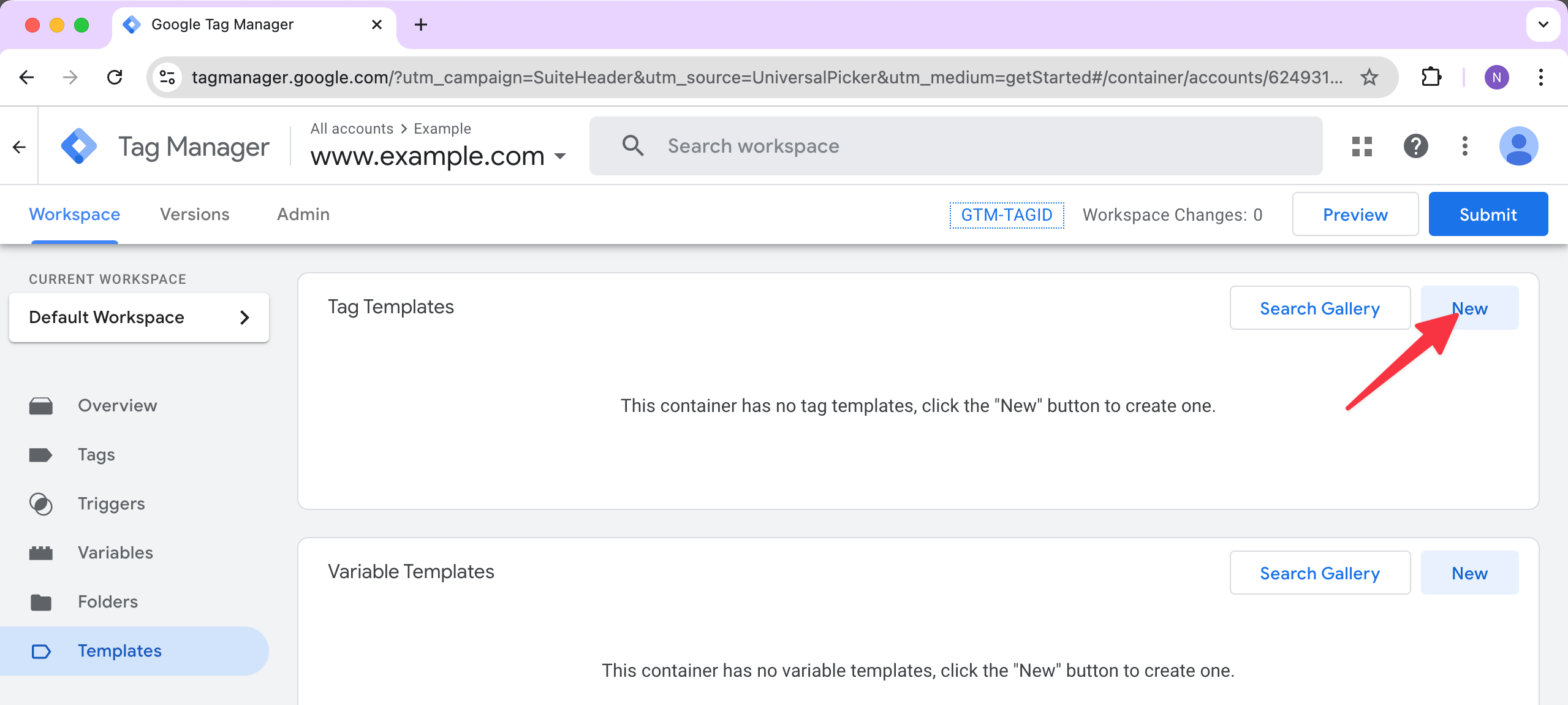
Step 3 - Open the Template Menu
click the three dots in the top right corner to open the dropdown menu.
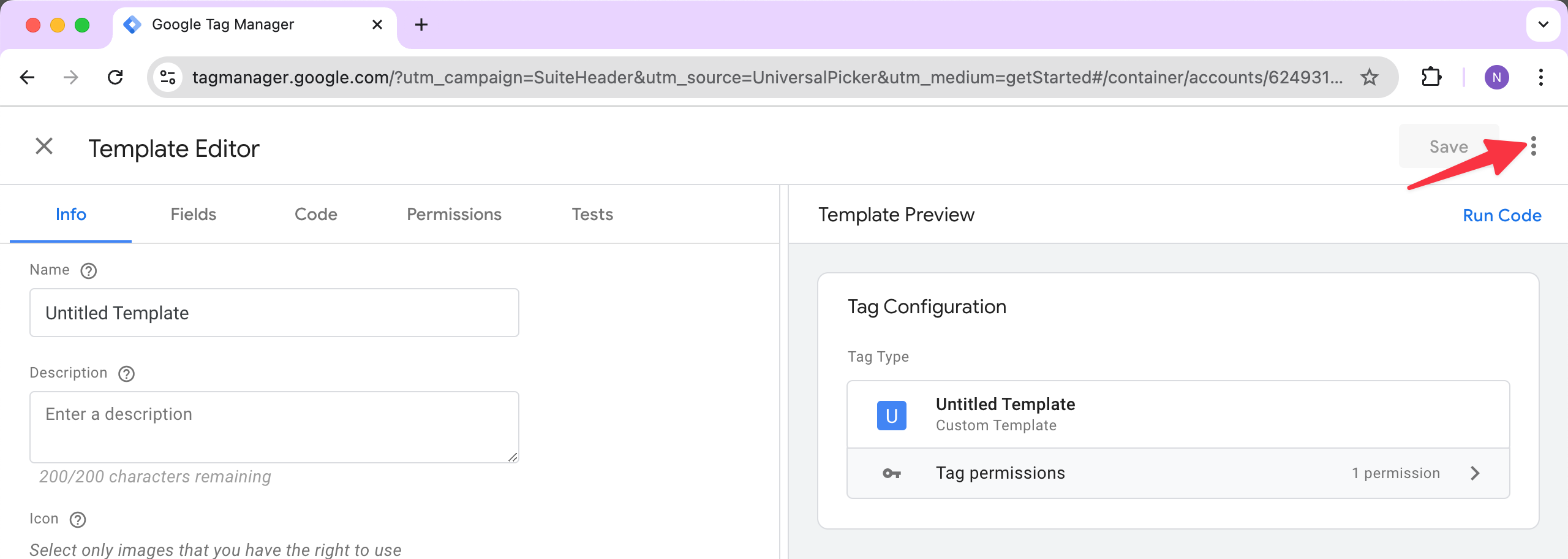
Step 4 - Import the Template
In the dropdown, select “Import” to open the file selection dialog.

Step 5 - Select the Template
Choose the “Uptick Tag Manager.tpl” file you downloaded and click “Open”.
You can go to the download steps by clicking here

Step 6 - Save the Template
Once imported, click “Save”, then close the Template window by clicking the “X” on the top left corner.

Creating a new Tag in Google Tag Manager
Now that the template has been imported, follow these steps to create a new Tag to activate the Uptick integration on your website.
Step 7 - Go to Tags
Click “Tags” on the left sidebar.

Step 8 - Create a new Tag
On the right side, click “New” to start create a new Tag.

Step 9 - Edit the Tag
In the new Tag box, hover over the “Tag Configuration” area until the pencil icon appears. Click the pencil to proceed.

Step 10 - Select the Template
With the dialog menu open, scroll down and select “Uptick Tag Manager” from the list of options.

Step 11 - Add Settings
Now that Uptick Tag Manager is added, update the configurations:
- Integration Id: Enter the code provided by your Uptick representative. If you don’t have one, please reach out.
- Placement: Select the page type you intend to show this on. If it is “Order Confirmation”, you can leave this configuration as is.
- Triggering: Hover over the “Triggering” box, and click the edit pencil when it appears.
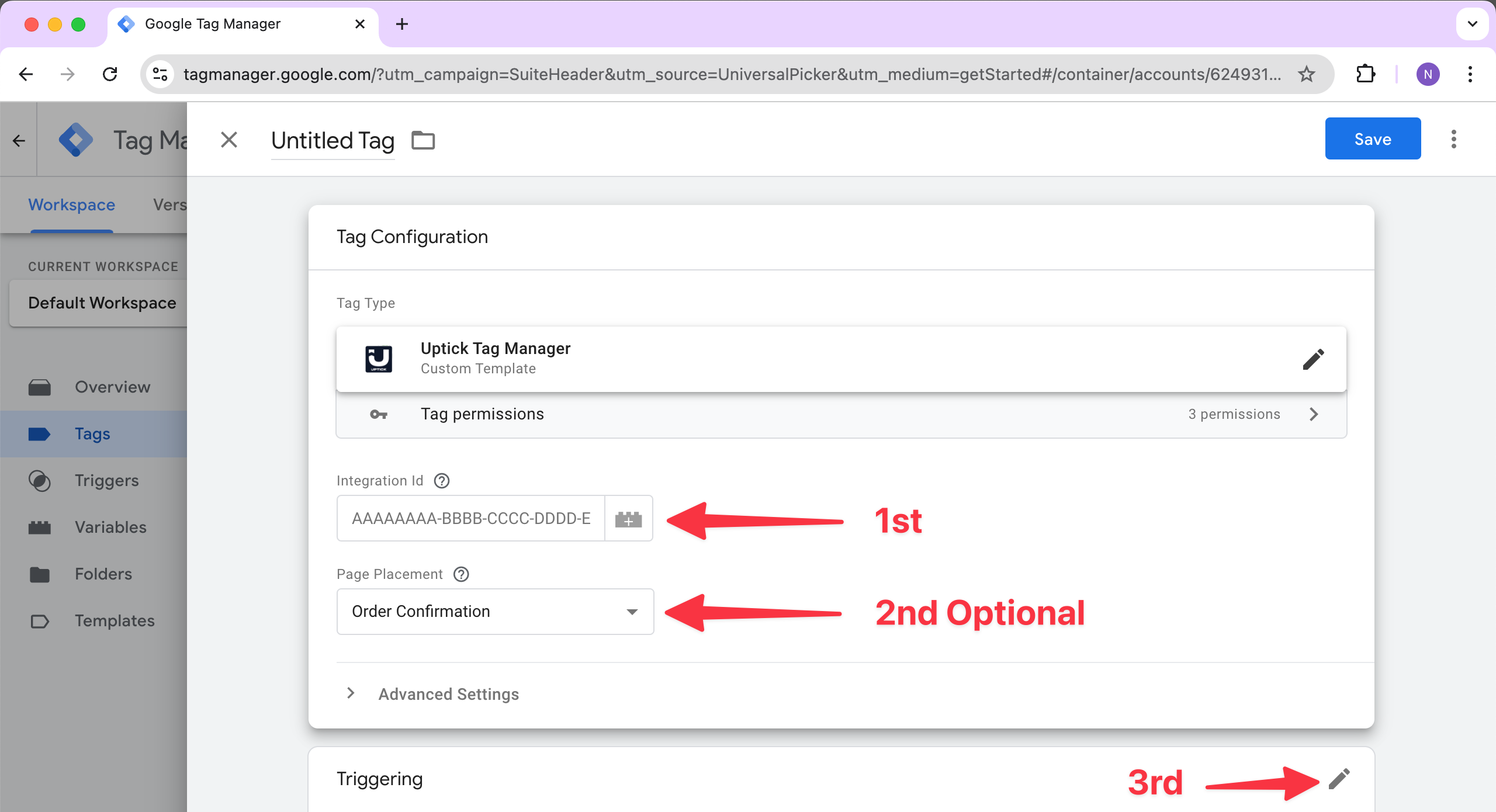
Step 12 - Create a new Trigger
In the Trigger dialog box, click the “+” sign to create a new Trigger.

Step 13 - Configure the Trigger
Hover over “Trigger Configuration” and click the edit pencil to start setting it up.

Step 14 - Select the Trigger
Choose “Page View”, which is the simplest trigger type to configure.

Step 15 - Enter the Trigger Settings
We only want the Uptick integration to trigger on the order confirmation page. Follow these steps:
- Choose “Some Page Views” to trigger the tag only on specific pages.
- Select “Page URL” in the first dropdown. Then select “contains” in the second dropdown. Finally, enter the unique part of your order confirmation page URL (e.g. “/orders/”). As an example we filled in “/orders/” if our checkout page was “https://www.example.com/orders/1342345”. This last input box will be specific to your web page or your platform. If you have an example checkout url and need help, please reach out to your Uptick representative.
- Click “Save” at the top of the page.

Step 16 - Name the Trigger
Enter a name for easy reference, such as “Order Confirmation View”. Then click “Save” on the dialog box.

Step 17 - Save the Tag
Now that the new tag is set up, click “Save” at the top of the page.
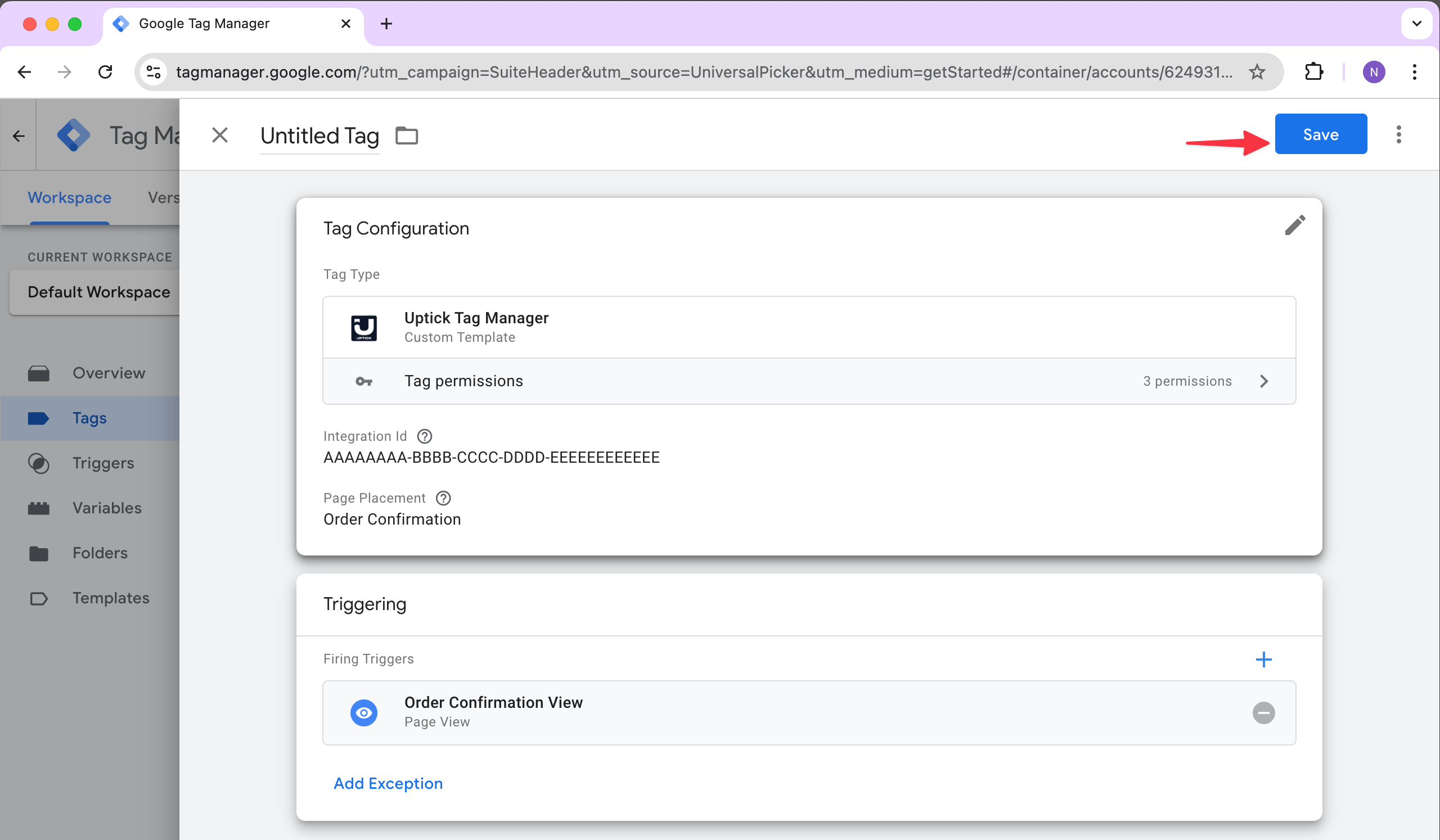
Step 18 - Name the Tag
Give the new Tag a descriptive name, such as “Uptick Tag Manager”.
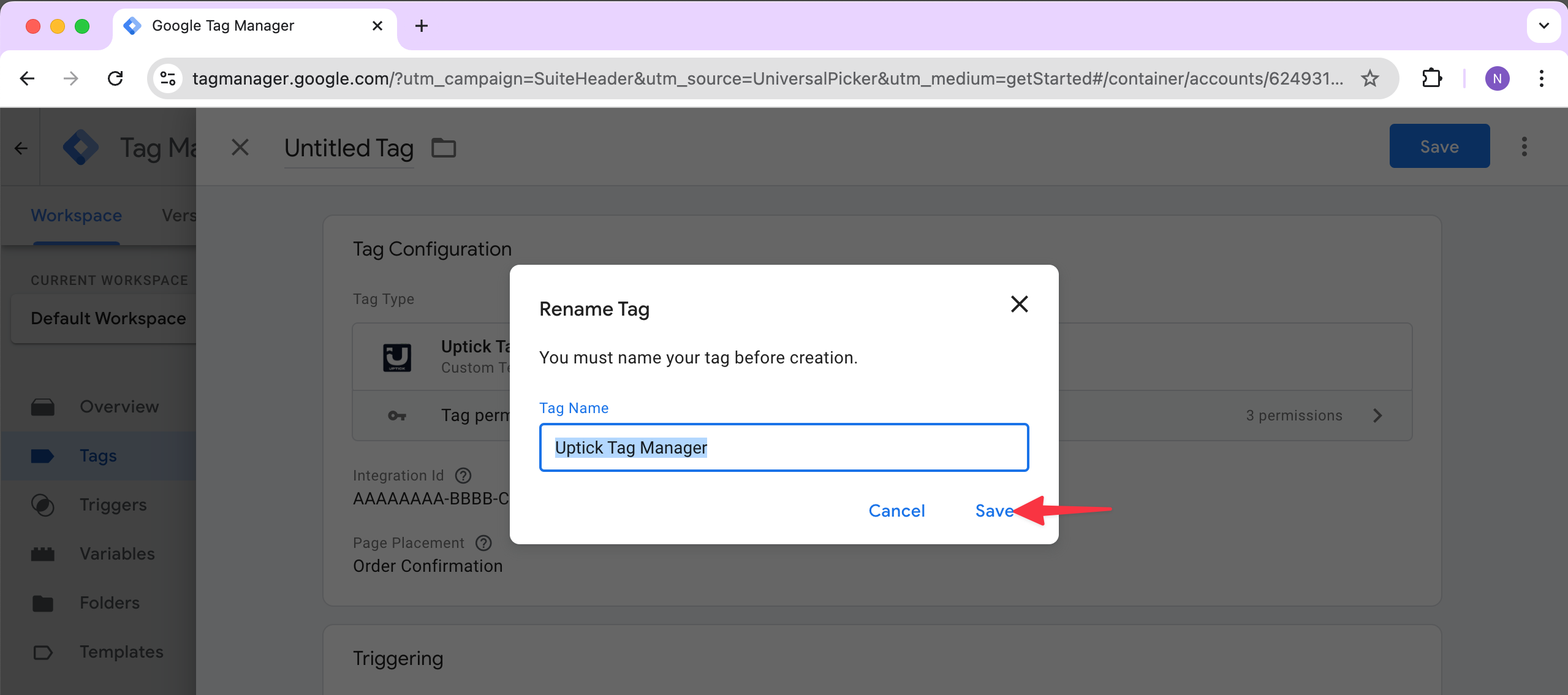
Step 19 - Preview or Save the Tag
To ensure it’s working properly, click “Preview” to test the Tag. Once confirmed, click “Save” and then Deploy your tags. Uptick will start appearing on the order confirmation page.
If Uptick doesn’t show up, double-check the Integration ID and trigger URL settings.
